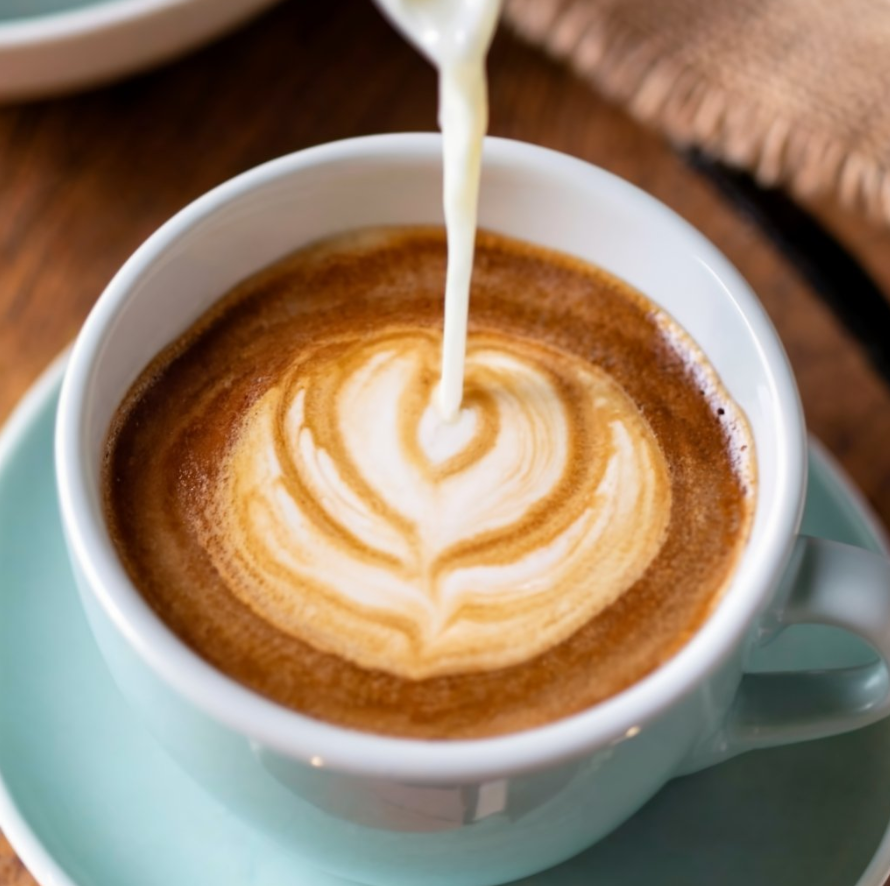Latte Less Milky: The Ultimate Guide

The Search for Coffee Dominance: Making Your Latte Less Milky
Ah, the latte. That cozy, creamy embrace of espresso and steamed milk. Millions of people love it; it’s a calming afternoon snack, a soft wake-up call, or a favorite basic. For many coffee enthusiasts, though, that creamy embrace may feel a little too much like a milk hug, thereby drowning out the rich, sophisticated flavors of the espresso itself. If you’re yearning for a coffee-forward experience without sacrificing the warmth and texture of a milky drink, you’ve come to the right place. I’m here to help you on how to produce your latte less milky, striking that elusive equilibrium where coffee really shines, as a journalist and expert always in quest of the ideal brew.
Understanding the Milky Baseline: Latte Ratios Demystified
Knowing the basic components of a latte will help us to make it less milky. Generally following a 3:1 milk-to-espresso ratio, a traditional latte calls for three parts steamed milk to one part espresso. This high milk content gives the latte its distinctive light, creamy flavor.
A Flat White, on the other hand, provides a stronger flavor, usually with a 2:1 milk-to-coffee ratio. This immediately shows a basic fact: you need to change this equilibrium to lessen milkiness. Furthermore, worth noting is that drinks like the Latte Macchiato and Iced Latte frequently depend even more on milk—sometimes at a 4:1 ratio—which makes them clearly milk-forward.
The Espresso Imperative: Increasing Your Coffee Power
By increasing the coffee component, the most straightforward and effective approach to minimize milkiness without necessarily reducing the volume of your drink is to be followed.
Usually, the easiest and most successful correction is the Double Shot Approach. Use two shots of espresso in your usual latte-sized cup instead of one. This instantly doubles the coffee concentration, forwarding the flavor and cutting through the milkiness. For a richer flavor, many home baristas accomplish this double cortado style.
Quality Over Quantity (of Water): Choosing a higher espresso volume, avoid the temptation to merely let your current single shot pull longer. Although it produces more liquid, it can result in a bitter or acidic shot; this is a frequent issue when the coffee is over-extracted. Concentrate on hitting a flawless shot inside its meant yield if you are working with one basket.
Think About Larger Baskets: Using a bigger basket—like a triple-shot basket—allows you to extract a larger, single, well-extracted shot if you have espresso equipment. This lets you have a more significant coffee foundation—e.g., a 1.5x-sized cortado—without the possible traps of pulling several separate shots or over-extraction. Reducing milk causes any flaws in your espresso to become even more obvious, hence obtaining that shot right is really vital.
Mastering the Milk: Beyond Volume Alone
Your approach to milk is also quite important, even if expanding coffee is essential:
Less total milk will create a less milky beverage, even while retaining your regular espresso quantity. If you are not duplicating your espresso, aim for a modestly lesser total beverage.
Try different milk brands; you could be surprised at the influence one may have. Some milk brands may have a stronger mouthfeel or taste more milk-like than others, even if their fat level is comparable. Find one that lets your coffee flavor come through by experimenting with several dairy or non-dairy substitutes; don’t be frightened.
The Bean Selection: Building Your Taste Foundation
Particularly when cutting milkiness, the kind of coffee bean you choose greatly influences the flavor of your beverage.
Pick stronger roasts: Some beans, even with a double shot, might have a weak taste when combined with milk. Select moderate to dark roasts or mixtures made especially to hold up nicely to milk. Often having chocolatey, nutty, or stronger flavors, these beans won’t be overshadowed by the creaminess.
Freshness Counts: Use just-roasted, just-ground beans always. Stale coffee will produce uninteresting, flat flavors milk will readily overwhelm.
Creating Your Ideal Less-Milky Latte Plan
Ultimately, your perfect less-milky latte depends on personal preference and experimentation. Here’s a fast plan:
Begin with a Double Shot: Most often, the first step is this—the simplest and most effective one.
Still too milky, lightly decrease the overall milk volume or target a Flat White’s 2:1 ratio.
Make sure your espresso is flawlessly dialed in; a bitter or sour shot will only be magnified in a less milky drink.
Experiment with Beans & Milk: Finding your perfect mix calls for experimentation with various coffee beans or milk brands.
You may turn your latte from a milk-dominated drink into a perfectly balanced beverage where the rich complexities of the coffee really come to the fore by concentrating on enhancing your espresso’s presence, meticulously controlling milk quantity, and choosing the right ingredients. Happy brewing!
FAQs
Why’s my latte taste so milky?
Your latte probably tastes too milky ’cause there’s way too much milk compared to espresso – like, three parts milk to one part espresso. Plus, if your coffee beans are super mild or your espresso shot is weak, the milk flavor just takes over.
How can I make my coffee less milky?
If you want less milk in your latte, try using two shots of espresso instead of just one. Or, just use less milk overall but keep the espresso the same. You could also aim for a flat white, which has a 2:1 milk-to-espresso ratio. That might do the trick.
Latte vs. Flat White: What’s the difference?
It all comes down to the milk-to-espresso ratio and how the milk feels. A latte usually has more steamed milk – around a 3:1 ratio – with a layer of foamy stuff on top. A flat white, though, uses less milk – closer to 2:1 – and has a really thin, smooth layer of microfoam. This means you taste the espresso more, and it blends better with the milk.
